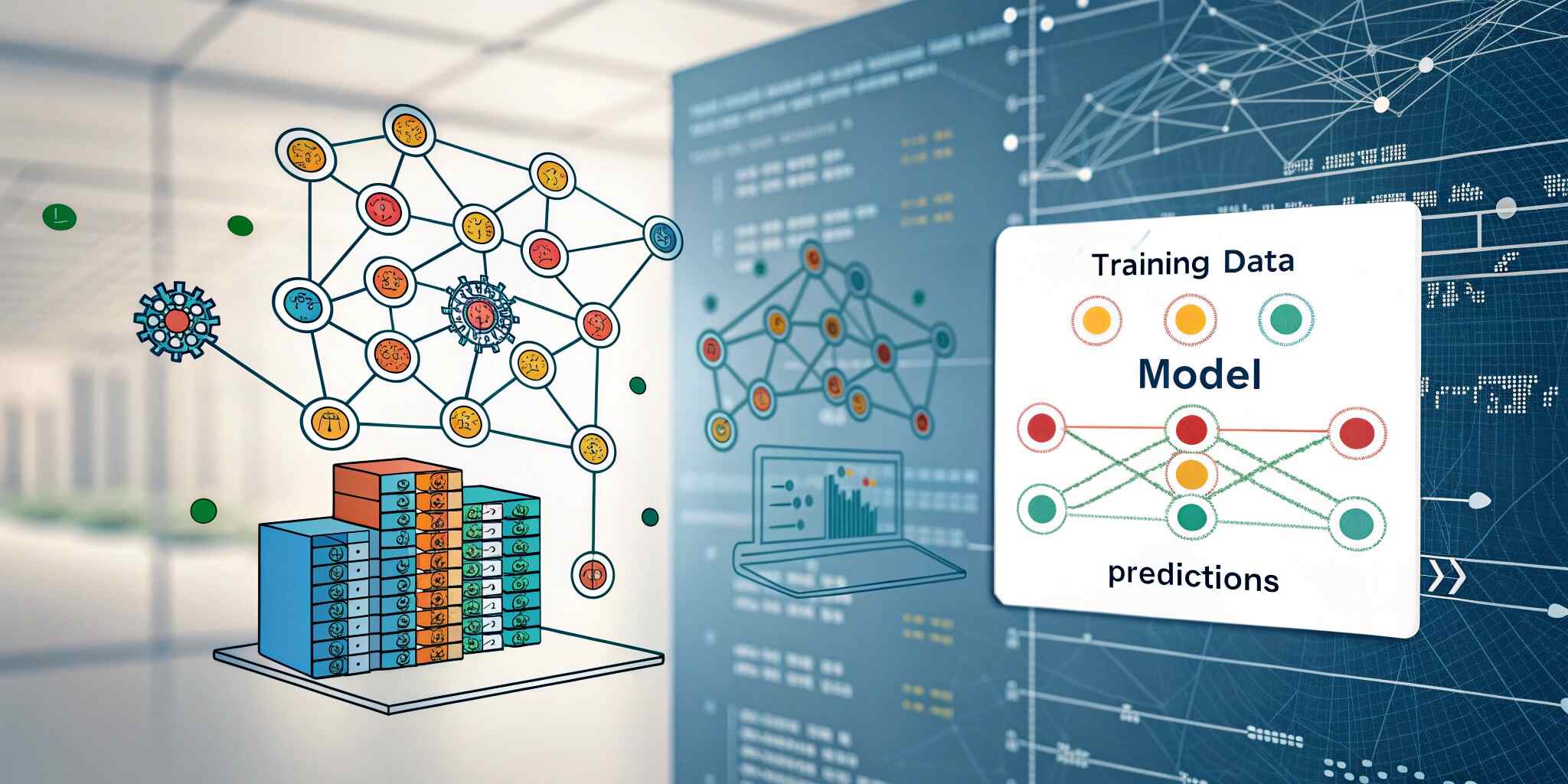Machine learning has moved from buzzword to business essential. Whether you're in IT, finance, healthcare, or retail, ML can unlock powerful insights from data. In this post, we’ll walk you through building a simple ML model using Python and the powerful Scikit-learn library.
Understanding the Machine Learning Lifecycle
Before writing code, it’s important to understand the ML project lifecycle. Here are the major stages:
- Problem Definition – What are you trying to predict or classify?
- Data Collection – Where will your data come from?
- Data Cleaning & Preprocessing – Removing errors, missing values, outliers.
- Feature Engineering – Selecting or transforming inputs that improve model performance.
- Model Selection – Choosing an algorithm that suits the problem.
- Training & Testing – Teaching the model and verifying its performance.
- Evaluation – Measuring accuracy, precision, recall, F1-score, etc.
- Deployment – Integrating the model into an application or system.
- Monitoring & Maintenance – Checking for model drift or degradation over time.
2. Why Python and Scikit-learn?
Python
- Intuitive syntax
- Extensive ML ecosystem (Pandas, NumPy, Matplotlib, Seaborn, TensorFlow, PyTorch)
- Supported by cloud platforms (AWS, Azure, GCP)
Scikit-learn
- Simple API for beginners
- Covers 90% of typical ML tasks
- Easy to integrate into larger pipelines or production systems
It’s ideal for quick experiments, small-to-medium data sizes, and fast prototyping.
3. Choosing the Right Model
Scikit-learn offers many ML models. But which one to choose?
Problem TypeAlgorithm OptionsClassificationLogistic Regression, Random Forest, SVM, k-NNRegressionLinear Regression, Ridge, Lasso, Decision TreeClusteringK-Means, DBSCAN, AgglomerativeDimensionality ReductionPCA, t-SNE, Truncated SVD
Start simple. Evaluate multiple models. Use cross-validation and tune parameters.
4. Real-World Applications in IT
Scikit-learn is not just academic. IT firms use it in:
- Customer segmentation
- Predictive maintenance
- Ticket classification (Help Desk)
- Churn prediction
- Credit scoring or risk modeling
- Sentiment analysis on customer feedback
- Sales forecasting
Its simplicity allows non-ML engineers to integrate AI/ML features quickly.
5. Common Pitfalls and How to Avoid Them
PitfallSolutionOverfittingUse cross-validation and regularizationImbalanced DataApply SMOTE or use stratified samplingPoor Feature SelectionUse feature importance scores or PCAData LeakageAvoid using test data during trainingMisleading AccuracyUse multiple metrics like F1-score or ROC-AUC
6. Building a Team & Workflow
You don’t need a huge data science team to get started:
- Data Analysts can prep the data
- Python Developers can implement models
- DevOps can help deploy and monitor
- Product Managers align ML with business goals
Use tools like MLflow, DVC, and Jupyter to collaborate effectively.
7. When to Move Beyond Scikit-learn
Scikit-learn is great for most classical ML tasks, but you might need more if:
- You’re dealing with huge datasets → use Spark MLlib or Dask
- You want deep learning → use TensorFlow or PyTorch
- You need real-time inference → move to ONNX, TensorRT, or FastAPI
8. Final Thoughts
Machine learning doesn’t have to be intimidating. With the right tools like Python and Scikit-learn, IT professionals can start building useful predictive systems quickly. From internal automation to client-facing analytics, machine learning opens up vast possibilities.
Conclusion
Building a machine learning model doesn’t have to be overwhelming. With the help of Python and Scikit-learn, IT professionals, developers, and data enthusiasts can quickly go from concept to implementation. By following a structured process—understanding the problem, preparing the data, selecting the right model, and evaluating it properly—you can build models that offer real business value.


